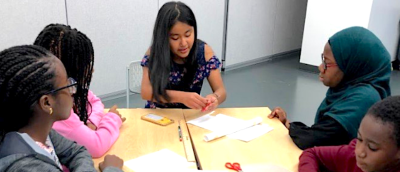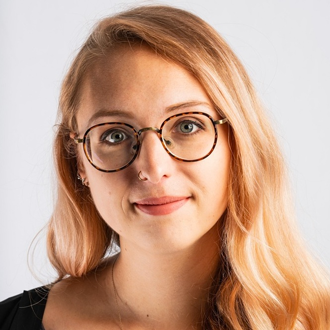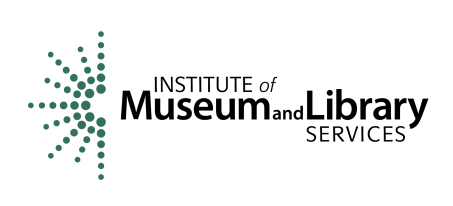Connecting and Engaging Tweens as "STEM Pals"

Authored by Kelsey Hughes, Librarian III, Prince George's County Memorial Library System
One chilly evening in October 2019, in a spacious meeting room at our brand-new library building in New Carrollton, Md., we gathered a group of 6-8th graders around a projector screen to take a Zoom call from a library in Norman, Okla. Though Zoom is an all-too-familiar tool to us now, back then it was just one part of our project designed to explore how we could use technology to foster connections between tweens in two different parts of the country, all while growing their intellectual curiosity and confidence with STEM.
This eight-week scaffolded program series, called “STEM Pals,” was a collaboration between our library and Pioneer Library System designed as part of the Urban Libraries Council’s Partners for Middle School STEM cohort. Launched at the beginning of 2019, this project has also become part of a larger effort within our library system to encourage collaboration and relationship building among teens and tweens to further learning in a variety of disciplines.
Even within our own program room, relationship building was key. Students at this particular age tend to be highly sensitive to what their peers think. This can lead to peer pressure and bullying, but can also lead to meaningful moments of interaction between students.
PGCMLS has long been committed to STEM education, and by the time we launched this project we were in our third year of a robust set of STEM program-in-a-box kits that moved around our branches to support high-quality STEM programming. Every branch had a recurring STEM program for families, which primarily targeted elementary-aged students. We also had active Teen Action Group and Teen Advisory Board programs at several branches who, among service learning and craft programs, often engaged in STEM activities and projects.
However, we had not yet specifically targeted the tween audience, an often-missed group who are too old for the elementary programs but often not quite mature enough for teen-focused activities. We also shied away from scaffolded, limited registration programming, having had mixed success in the past with generating consistent attendance and engagement across multiple weeks. As part of the grant project through ULC, we wanted to push ourselves to fill those gaps, and incorporating concepts of social and emotional learning (SEL) ended up being key to our success.
In thinking about what SEL can look like and how it can be intentionally incorporated into our STEM learning, the Collaborative for Academic, Social, and Emotional Learning’s framework for SEL has been immensely helpful. Their framework incorporates five elements of SEL: self-awareness, self-management, social awareness, relationship skills and responsible decision-making.
We were able to focus on those different areas of social and emotional learning through very intentionally crafted STEM activities. Often, when we think about STEM, we think about hard or technical skills — coding, circuitry, engineering and more. But both libraries knew that today’s STEM professionals are frequently asked to employ much more abstract soft skills — effective communication, strong teamwork, creative problem-solving, openness to learning and ethical and empathetic decision-making. We all knew that these skills will grow in demand as the job market continues to evolve.

Throughout the program series, students were very rarely given a specific set of instructions to complete their activities. Rather, they were encouraged instead to brainstorm and experiment. For example, in an early week, we had students complete an activity called “the Windy City Tower.” Given a limited supply of paper and tape, students had to work in a team to create a tower of a certain height that could hold up a washer and could withstand “wind” from a fan. The end result was four different teams with four very different models, each with varying levels of success in standing up to the fan’s wind. The most successful of the models was never blown over, even when turning the fan up to full force and placing the model directly in front of the fan.
Though there was a lot of critical thinking involved, we found that we also needed to include “guardrails” to prevent tweens from becoming frustrated and completely giving up. When several groups were having trouble thinking about ways to make their tower stronger, one of our staff facilitators asked them which way she might be harder to push over — standing straight up with her feet together, or standing more in a triangular position with her feet wide. This helped students start to make connections to experiences they had in their life and make decisions about how to reinforce their structures.
We also focused on students building relationships with one another and with the students at the partner library. Each week, we saw them get more comfortable speaking with each other and even going “off script” from our regularly scheduled icebreaker activity. One week, students from our library asked the Oklahoma students to show off the sandwiches that had been provided as their snack. In later weeks, they became even more comfortable, asking one another what the capital of their state was or what the weather in that part of the world was like. Most of our interactions were conducted as two whole groups video chatting each other, but for one project we did have the tweens interact one-on-one between states. If we could do it over again, we would have created more of those moments as we could see a deeper level of connection begin to form during that activity.
Even within our own program room, relationship building was key. Students at this particular age tend to be highly sensitive to what their peers think. This can lead to peer pressure and bullying, but can also lead to meaningful moments of interaction between students. We had a very clear set of agreements that we reviewed at the beginning of each program which helped us establish a safe and positive space. By the middle of the program, we started to see students compliment each other when they did something well and help each other work through mistakes with no judgment. One week, a tween quietly passed me a note letting me know that a girl at his table seemed disengaged, and that he was going to try to help her open up. At the end of the program, a mom shared with us that she wished we could hold the program again because it helped her son transition into middle school more comfortably. One student wrote on his exit survey that his comfort with STEM was now at a 5 out of 5 (he said 3 on the first day) because “everyone is nice here.”

After the success of that program, we immediately realized that not only was it beneficial for students to meet and learn from peers in other states, but that there could be immense potential for recreating those connections within different parts of our county. Our county is one of the largest in Maryland, with almost 1 million residents, spanning from very urban communities bordering Washington, D.C., to very rural farmland. Our reach spans neighborhoods of high wealth to high poverty, and areas with community members of different races and ethnicities and where different languages are spoken. Students very rarely have the opportunity to meet one another if they attend different schools, and often have very different lived experiences despite growing up less than an hour apart. What if we could create a similar exchange between our branch libraries, helping students expand their understanding of the communities that surrounded them?
Not long after the STEM Pals initial program wrapped up, the pandemic hit and forced us to close our doors. Though much of how we operate has changed, we have been able to continue to put these ideas into action through the creation of a systemwide virtual teen program. This new program was spearheaded by our Teen Services Specialist Isaiah West and a team of teen-focused staff from across the library system. We now have a Discord Server, an online forum which replicates the informal teen spaces in our buildings and where our teens can now connect with each other based on their interests, not geography. We also have a virtual Teen Action Group, composed of more than 100 members and growing where teens break off into different project teams based on their passions and expertise in order to plan and develop service projects for the community. Because they are older, these teens need even fewer “guardrails” than our younger STEM Pals students and they use their voices to shape the kinds of projects they are most passionate about from the ground up.
Building SEL into our programming mindset was important to us prior to closing and continued to be a vital component of our programming after the pandemic closed our doors. At a time when many of us are having fewer social interactions on a day-to-day basis, focusing on SEL is more vital than ever. It has created so many opportunities for tweens and teens to become more open to learning in a fun, inclusive and connected way.

Kelsey Hughes
Librarian III, South Bowie Branch Library, Prince George's County Memorial Library System
Kelsey Hughes serves as the co-chair of the Maryland Library Association Teen Interest Group. She received her master's degree in Library and Information Science from the University of Maryland, College Park in 2018. Kelsey is passionate about crafting high quality, engaging and educational programs that help library customers of all ages to become interdisciplinary, curious thinkers. Kelsey was awarded the Young Adult Library Services Association 2021 Volunteers of the Year Award.
STEM Pals: Using Technology as a Tool to Develop 21st-Century Social Skills
Prince George's Memorial Library System
ULC STEM Program Model
About the ULC Partners for Middle School STEM Initiative
Developed in partnership with the National Center for Interactive Learning at the Space Sciences Institute and funded by the Institute for Museum and Library Services, this two year project focused on building community partnerships that resulted in increased science, technology, engineering and math learning opportunities for low-income middle school students in urban areas.
This project was made possible in part by the Institute of Museum and Library Services grant LG-95-18-0025-18.
Related Articles

Getting Sonoma Teens Into the “Mind of a Scientist”
Sonoma County Library
Discover how Sonoma County Library created a new STEM learning opportunity for teens that addresses race and social equity issues embedded within science and our society.
Learn More

Engaging Youth of All Ages in STEM
Algona Public Library
Find out how Pioneer Library System used STEM education to engage youth and foster conversations about diversity, representation and empathy.

